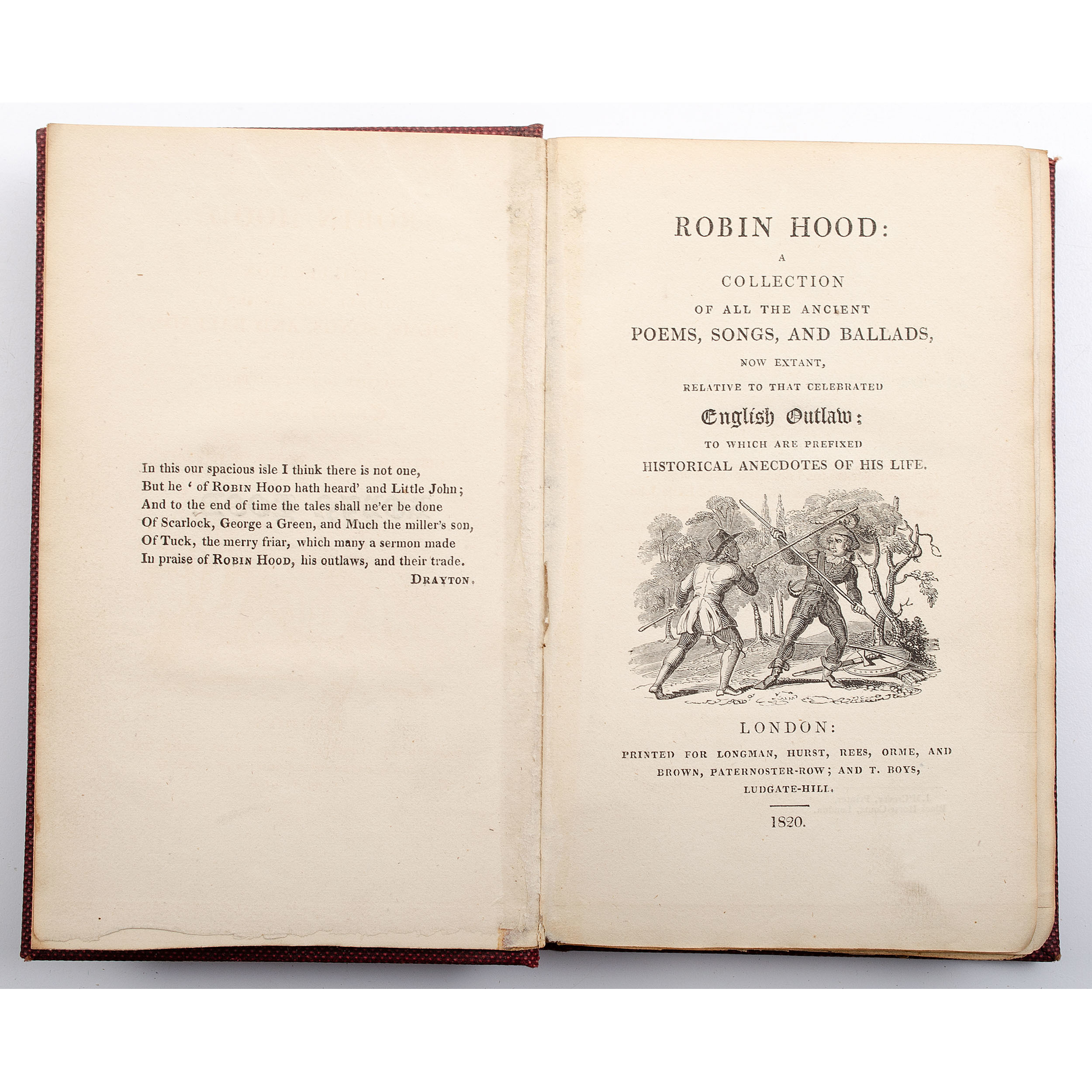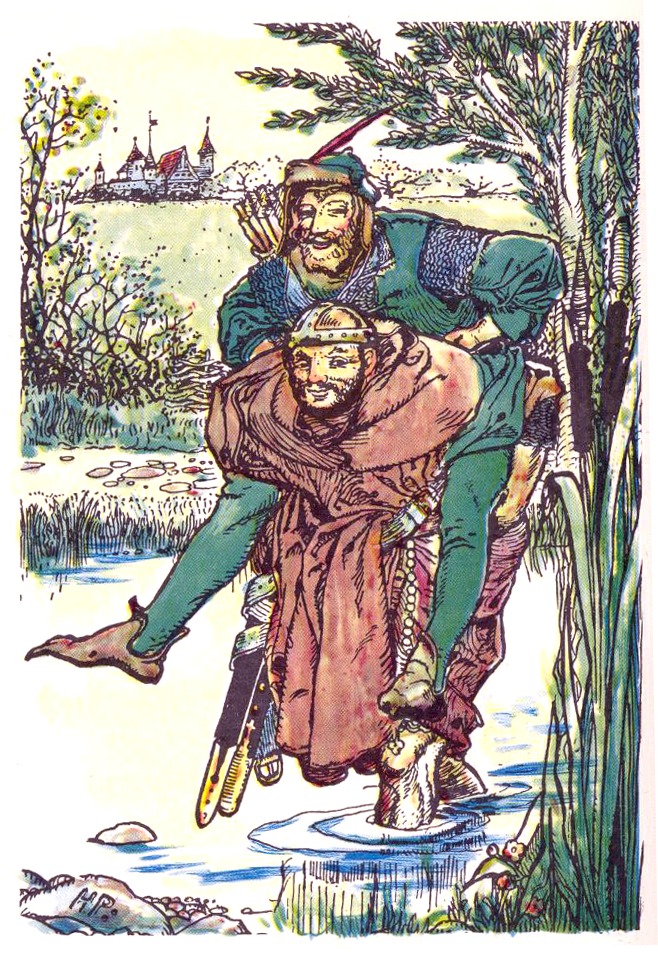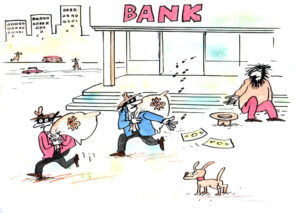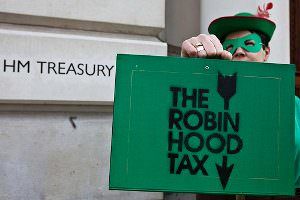Even the Latest Robin Hood Flop Can’t Kill the Legend
There have been many renditions of the British folk tale, but none quite as terrible as Otto Bathurst’s recent action flick. Screenshot / YouTube
Screenshot / YouTube
It’s been said that every generation gets the Robin Hood it deserves, but what have we done to deserve the abomination that was recently dropped in mall-plex theaters? With a couple of weeks left in the year, it’s too soon to call Otto Bathurst’s “Robin Hood” the worst movie of 2018, but I can safely say it’s the worst movie so far this century.
Cluttered and tedious, with a plot that seems to have been adapted from posts on a fan-fiction site, this “Robin Hood” is stitched together from bad ideas in other Robin Hood movies. As in the Kevin Costner rendition, Robin, played by Taron Egerton, goes off to fight in the Crusades and brings back a black friend played by Jamie Foxx; didn’t Dave Chappelle parody this plot device 25 years ago in Mel Brooks’s “Men in Tights”?
To top it off, it’s packed to the rafters with things we don’t associate with Robin Hood. Marian, played by Eve Hewson, becomes a female Che Guevara, tossing Molotov cocktails at the faceless and inept men in arms. And let’s just hope the rooftop horse chase doesn’t become a staple of future Robin Hood movies.
Movies made by major studios once fell under various genres–westerns, mysteries, horror, adventure, and so forth. Now there seems to be only one: action. When “The Mummy” is remade, the King Arthur story retold or “Mission Impossible” pumped up into yet another movie (six times, so far), the elements that made the original a success—suspense, character development, mise-en-scene—are dumped in favor of action, spectacle and special effects.
One of the few notable elements of the new “Robin Hood” is that it has an English actor in the lead. Incredibly, Egerton is only the second English actor to play the greatest rogue of British folklore in a serious feature film, the first being the Irish-born English actor Richard Todd in a handsome, too-little-seen 1952 Disney film, “The Story of Robin Hood and His Merrie Men.”
Watch Richard Todd’s Robin duel with Little John (James Robertson Justice) with quarterstaffs:
The British are better represented in the comedy Robin Hoods. There was John Cleese’s socialist Robin Hood in Terry Gilliam’s “Time Bandits” (1981). (“Hello,” he greets the time travelers, “I’m … Hood.”)
John Cleese’s Robin Hood distributes wealth to the poor:
Cary Elwes was the hero in Mel Brooks’ “Robin Hood: Men in Tights” (1993). (In which, says Elwes, the people should trust him because, “Unlike some Robin Hoods, I can speak in an English accent.”)
I suppose the nitpickers will also count Brian Bedford, who was the voice of the cartoon fox in the 1973 Disney feature. (And we’re not counting TV, although Richard Greene was fine in the series “The Adventures of Robin Hood,” which ran from 1955-1960.)
Most Robin Hoods have been played by colonials: the American Douglas Fairbanks in the 1922 silent film, Australian Errol Flynn in the all-time popularity champion, “The Adventures of Robin Hood” (1939), New Zealand-born Russell Crowe in 2010, and Kevin Costner in his clunky “Prince of Thieves” (1991). We’ve had an Irish actor, Patrick Bergin, in the underrated 1991 “Robin Hood” costarring Uma Thurman as Maid Marian, a much better film than Costner’s, which got all the publicity that year; a Scotsman, Sean Connery, in a revisionist “Robin and Marian” (1976) directed by Richard Lester with Audrey Hepburn as Marian; and a Welshman, Jonas Armstrong, in a highly entertaining BBC series (2006-2009).
Here’s Errol Flynn as the most popular of all Robin Hoods:
There was even a musical Robin Hood—if you count Frank Sinatra in “Robin and the 7 Hoods” (1964).
When Ridley Scott’s “Robin Hood” was released in 2010, stars Russell Crowe, Cate Blanchett and William Hurt were heard on talk shows repeating the company line: “Forget everything you’ve ever heard about Robin Hood.” What they should have said was, “Forget everything you’ve ever seen in Robin Hood movies.” In Scott’s film, Robin helps usher in the Magna Carta and saves England from a French invasion in a bloody battle more appropriate to “Braveheart” than the Robin Hood story. (The gore reminded me of a translation of “Beowulf” that the late author Jorge Luis Borges criticized for “being more primitive than the original.”)
At least the fighting in the Scott epic looked as if it was done by humans; the action scenes in the new Robin Hood, much like those in Guy Ritchie’s “King Arthur: Legend of the Sword” (2017), look CGI-ed.
Did He Exist?
With so many books, documentaries and movies about Robin Hood, we know everything about him except whether or not he existed.
Robin Hood and King Arthur, both of which got their literary starts around the same time, are Britain’s two parallel myths: the founder of the dynasty and the forest outlaw. Arthur appeared first on paper, or at least parchment, courtesy of Geoffrey of Monmouth in the early 12th century and attracted the upscale crowd. Ballads and later, folk plays, about Robin appealed to the yeoman class.
King Arthur looks to the past and is forever fixed in time. Robin Hood, merry trickster and thief, is still evolving, transcending his national and historical origins to inspire folk heroes in cultures all over the world.
In the United States, every bandit who has stood for an oppressed minority has been dubbed a Robin Hood. The early 19th century California outlaw Joaquin Murrieta was called by his biographer “The Robin Hood of El Dorado,” and the fictional character he helped inspire, Zorro, is world famous. (Douglas Fairbanks, the biggest adventure star of the silent era, happened to play both Robin Hood and Zorro.)
The Robin Hood of the early ballads was a clever but otherwise undistinguished Saxon highwayman with no particular grudge toward the ruling Normans—that would come later. He robbed the rich and kept the money, all the while maintaining respect for his king. William Langland, author of the gloomy 14th century moral tract “Piers Plowman,” approved of neither Robin nor lazy sods who wasted time reading nonsense about him; “I kan [know] noght parfitly my Paternoster. … But I kan rymes of Robyn hood …” says a slothful priest in Langland’s satire who can’t memorize the Lord’s Prayer but can quote verbatim from medieval England’s equivalent to today’s X-Men comics.

According to Stephen Knight in his 2003 book, “Robin Hood: A Mythic Biography,” by 1600 there were at least 200 known references to Robin Hood emphasizing the hero’s bold resistance to authority. Little John is around in most of the early stories, sometimes acting as an equal instead of a sidekick. Once the basics of the story were established, Robin acquired new companions each time the story was told: Maid Marian here, Friar Tuck there. Robin got himself involved in contemporary controversies and became a serviceable symbol for whatever grievances or resentments were sweeping through England in a given century.
As Knight puts it, “When the myth goes through periods of dynamic activity, it may indeed operate as a safety valve, as the reflex of genuine political resistance to oppression.”
With the exception of Ben Jonson, who unfortunately died before completing his Robin Hood play, “The Sad Shepherd,” Robin Hood was a popular phenomenon, a subject seldom dealt with by serious writers. By the end of the 18th century, says Knight, “Robin Hood became a new man, and one who is still with us.”
Unlike other medieval heroes “who did not struggle free of the setting amber of antiquity, Robin … escaped to illuminate another day, another part of the sociocultural forest, with his multiple contradictory and essentially volatile set of values.” Stated another way, Robin could exemplify the values of either the left–redistribution of wealth and land—or conservatives—rebelling against corrupt central authority and high taxes. But mostly the left.

It was the character’s evolution into a social bandit that got him notice from literary A-listers. In 1822, Thomas Love Peacock’s novella, “Maid Marian” was a bestseller, and around the same time, Sir Walter Scott’s “Ivanhoe” gave Robin a costarring role, introducing the theme of Saxon yeomanry versus Norman nobility into the story. “Ivanhoe” also introduced two other staples of the saga: the Merry Men’s allegiance to King Richard the Lionheart and Robin as descended from nobility, according him the rank of Earl of Locksley.
Scott’s Ivanhoe/Robin may have been modeled in large part on Scotland’s national hero, William Wallace. Mel Gibson’s “Braveheart” presents Wallace as a Spartacus in kilts, but as English scholar Maurice Keen noted in his work “The Outlaws of Medieval Legend,” Wallace spent more of his life as a bow-and-arrow-toting forest outlaw, hunting deer and robbing arrogant Englishmen, than he did leading armies in combat.
Knight observed that both Wallace and Robin “are provoked to outlawry by legal violence, both command substantial numbers of well-disciplined men. … In the transition from small-time yeoman defender of local rights to major threat to national law and order, Robin appears in part to be remodeled in the form of Wallace.” Scott knew all of the Wallace legends and even wrote a book-length poem inspired by him.
However, it wasn’t a Scotsman or Englishman who gave us the Robin Hood we know today. It was American writer and illustrator Howard Pyle, who combined the most palatable images of Robin Hood and revamped him into a cross between a Victorian gentleman and Jean-Jacques Rousseau’s noble savage. Published in 1883, “The Merry Adventures of Robin Hood,” in its various forms, has never gone out of print and may well be the all-time bestselling children’s book of the Western world.
Pyle’s book was hugely popular in Britain, where it was adapted into a stage play in which women played the role of Robin wearing a garment that would come to be identified with the Robin Hood story: tights to show off their legs.
Watch Mel Brooks’s Merry Men show off their legs:
You could exhaust yourself with studies to determine whether either Arthur or Robin were real or simply myth. But then, as everyone’s favorite sixth-century scholar, Stephanus of Byzantium, put it, “A myth is something that never was but always is.”
One thing is for certain: we’ll see him again. If the new Robin Hood doesn’t kill him, he’ll never die, but with luck we’ll deserve a better Robin Hood next time around.
Your support matters…Independent journalism is under threat and overshadowed by heavily funded mainstream media.
You can help level the playing field. Become a member.
Your tax-deductible contribution keeps us digging beneath the headlines to give you thought-provoking, investigative reporting and analysis that unearths what's really happening- without compromise.
Give today to support our courageous, independent journalists.





You need to be a supporter to comment.
There are currently no responses to this article.
Be the first to respond.